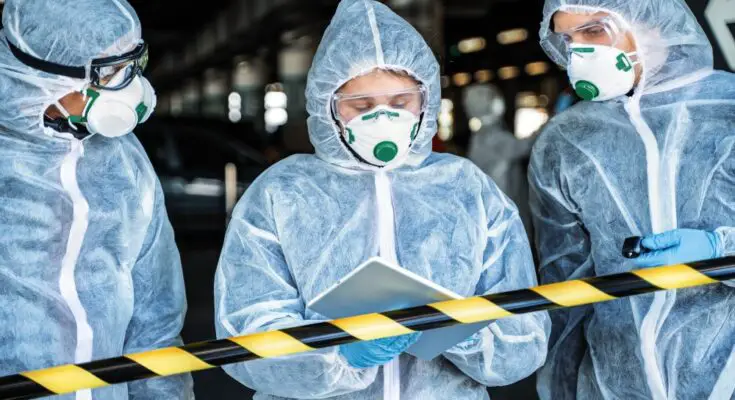When materials are too dangerous for the average person to handle or household cleaning products can’t get the job done, it’s time to call in the professionals. The question is who to call.
Many people use the terms HAZMAT and biohazard interchangeably, but they refer to different types of hazardous material management. If you think your home or business might need one of these cleaning services but aren’t sure who to call, start by exploring what sets these terms apart.
What Defines a Biohazard?
A biohazard, or biological hazard, is any biological substance that poses a threat to the health of living organisms. This category of waste can include medical waste—used needles, blood-soaked gauze, or bodily fluids—and animal carcasses infected with a contagious disease.
If we break biohazards into broad categorizations, they’re typically viruses, bacteria, fungi, and other microorganisms, as well as their toxins.
Biohazards are common in medical settings, where exposure to body fluids or infectious agents is prevalent. Still, biohazards aren’t exclusive to these settings. For example, a hoarding circumstance that included waste, mold, or infestation would count as a biohazard situation that requires biohazard cleaning.
What Is HAZMAT?
While it’s common to use HAZMAT as a word, it’s actually an abbreviation for “hazardous materials.” Much like biohazardous materials, these substances pose a risk to health, property, and the surrounding environment.
This category can include chemicals, radioactive materials, and even physical agents such as explosives. Everyday examples of HAZMAT include industrial chemicals, household cleaners, and pesticides. They all require specific handling and disposal protocols. Common HAZMAT scenarios include gasoline and oil spills, where specialized care is necessary to clean up the material and protect the surrounding area from chemical exposure.
What Are the Differences Between the Two?
Now that we know what HAZMAT and biohazards are and what scenarios might require cleaning, we can explore their differences. Since both require specialized cleaning to protect public health, how are they different?
When we use the term bio in this context, the hazardous materials are “alive.” Infections, diseases, and viruses can actively spread. On the other hand, hazardous materials can’t spread. While hazardous substances can be just as harmful to various organisms that come in contact with them, the resulting illness or injury can’t jump from person to person or organism to person.
Both types of cleaning services play vital roles in safeguarding public health, property, and the environment, but they address different categories of dangerous substances. With this information, you can call the right team to tackle the job and remediate your space.


